Use focus-visible
Note 1: In each of the 3 options outlined below, buttons behave the same way (no focus ring on click), but selects and inputs vary slightly in their default behavior. Only Option 3 removes focus rings consistently around buttons, inputs, and selects. Please compare all approaches and make sure you understand the implications.
Note 2: Due to the cascading nature of CSS, the order of the CSS rules is important.
Note 3: There are still some accessibility concerns with any focus-visible approach. Namely, that until browsers expose a configuration to let users choose when to show visible focus rings, focus-visible should be considered worse for accessibility than using focus rings everywhere all the time, but better than the harmful :focus {outline:none} approach mentioned in other answers to this question. See "A note about accessibility" section at the bottom of this answer for more details.
OPTION 1: Use the :focus-visible pseudo-class
The :focus-visible pseudo-class can be used to remove outlines and focus rings on buttons and various elements for users that are NOT navigating via keyboard (i.e., via touch or mouse click).
Warning: As of 2021, the :focus-visible pseudo-class is ** widely supported across modern browsers but fails on fringe browsers**. If old-browser support is important, the Javascript polyfill in option 2 below is the closest approximation.
/**
* Remove focus styles for non-keyboard focus.
*/
:focus:not(:focus-visible) {
outline: 0;
box-shadow: none;
}
/**
* Cross-browser styles for explicit focus via
* keyboard-based (eg Tab) navigation or the
* .focus-visible utility class.
*/
:focus,
.focus-visible:focus:not(:focus-visible) {
outline: 0;
box-shadow:
0 0 0 .2rem #fff,
0 0 0 .35rem #069;
}
<h3>Defaults:</h3>
<button>Foo</button>
<input type="button" value="Bar"/>
<select><option>Baz</option></select>
<input type="text" placeholder="Qux"/>
<textarea placeholder="Quux" rows="1"></textarea>
<h3>Force focus on click:</h3>
<button class="focus-visible">Foo</button>
<input class="focus-visible" type="button" value="Bar"/>
<select class="focus-visible"><option>Baz</option></select>
<input class="focus-visible" type="text" placeholder="Qux"/>
<textarea class="focus-visible" placeholder="Quux" rows="1">
</textarea>
OPTION 2: Use a .focus-visible polyfill
This solution uses a normal CSS class instead of the pseudo-class mentioned above and has wider browser support (in 2021). It requires either 1 or 2 Javascripts be added to your HTML; one for the official focus-visible polyfill and the other for older browsers that don't support classList.
Note: In Chrome, the polyfill seems to treat selects differently than the native :focus-visible pseudo-class.
/**
* Cross-browser focus ring for explicit focus
* via keyboard-based (eg Tab) navigation or the
* .focus-visible utility class.
*/
:focus {
outline: 0;
box-shadow:
0 0 0 .2rem #fff,
0 0 0 .35rem #069;
}
/**
* Remove focus ring for non-explicit scenarios.
*/
:focus:not(.focus-visible) {
outline: 0;
box-shadow: none;
}
<h3>Defaults:</h3>
<button>Foo</button>
<input type="button" value="Bar"/>
<select><option>Baz</option></select>
<input type="text" placeholder="Qux"/>
<textarea placeholder="Quux" rows="1"></textarea>
<h3>Force focus on click:</h3>
<button class="focus-visible">Foo</button>
<input class="focus-visible" type="button" value="Bar"/>
<select class="focus-visible"><option>Baz</option></select>
<input class="focus-visible" type="text" placeholder="Qux"/>
<textarea class="focus-visible" placeholder="Quux" rows="1">
</textarea>
<!-- place this code just before the closing </html> tag -->
<script src="https://cdn.polyfill.io/v2/polyfill.js?
features=Element.prototype.classList"></script>
<script src="https://unpkg.com/focus-visible"></script>
OPTION 3: Use a global key-navigation vs mouse-navigation state
An inverse solution to focus-visible, is to disable outlines on mousemove, and enable them on keydown -> "Tab". In this case, rather than specifying which elements shouldn't show an outline, you must specify which elements should.
document.addEventListener("mousemove", () =>
document.body.classList.remove("focus-visible")
);
document.addEventListener("keydown", ({key}) =>
(key === "Tab") && document.body.classList.add("focus-visible")
);
/**
* Cross-browser focus ring for explicit focus
* via keyboard-based (eg Tab) navigation or the
* .focus-visible utility class.
*/
:focus {
outline: 0;
box-shadow:
0 0 0 .2rem #fff,
0 0 0 .35rem #069;
}
/**
* Remove focus ring for non-explicit scenarios.
*/
body:not(.focus-visible) :focus:not(.focus-visible) {
outline: 0 !important;
box-shadow: none !important;
}
<h3>Defaults:</h3>
<button>Foo</button>
<input type="button" value="Bar"/>
<select><option>Baz</option></select>
<input type="text" placeholder="Qux"/>
<textarea placeholder="Quux" rows="1"></textarea>
<h3>Force focus on click:</h3>
<button class="focus-visible">Foo</button>
<input class="focus-visible" type="button" value="Bar"/>
<select class="focus-visible"><option>Baz</option></select>
<input class="focus-visible" type="text" placeholder="Qux"/>
<textarea class="focus-visible" placeholder="Quux" rows="1">
</textarea>
A note about accessibility
Removing all focus rings a la :focus { outline: none; } or :focus { outline: 0; } is a known accessibility issue and is never recommended. Additionally, there are folks in the accessibility community who would rather you never remove a focus ring outline and instead make everything have a :focus style — either outline or box-shadow could be valid if styled appropriately.
Finally, some folks in the accessibility community believe developers should not implement :focus-visible on their websites until all browsers implement and expose a user preference which lets people pick whether all items should be focusable or not. I personally don't subscribe to this thinking, which is why I provided this solution that I feel is far better than the harmful :focus { outline:none }. I think :focus-visible is a happy medium between design concerns and accessibility concerns. As of 2022, Chrome browser has exposed a user preference to set focus visibility styles, but FireFox has not.
Resource:
Demo:


